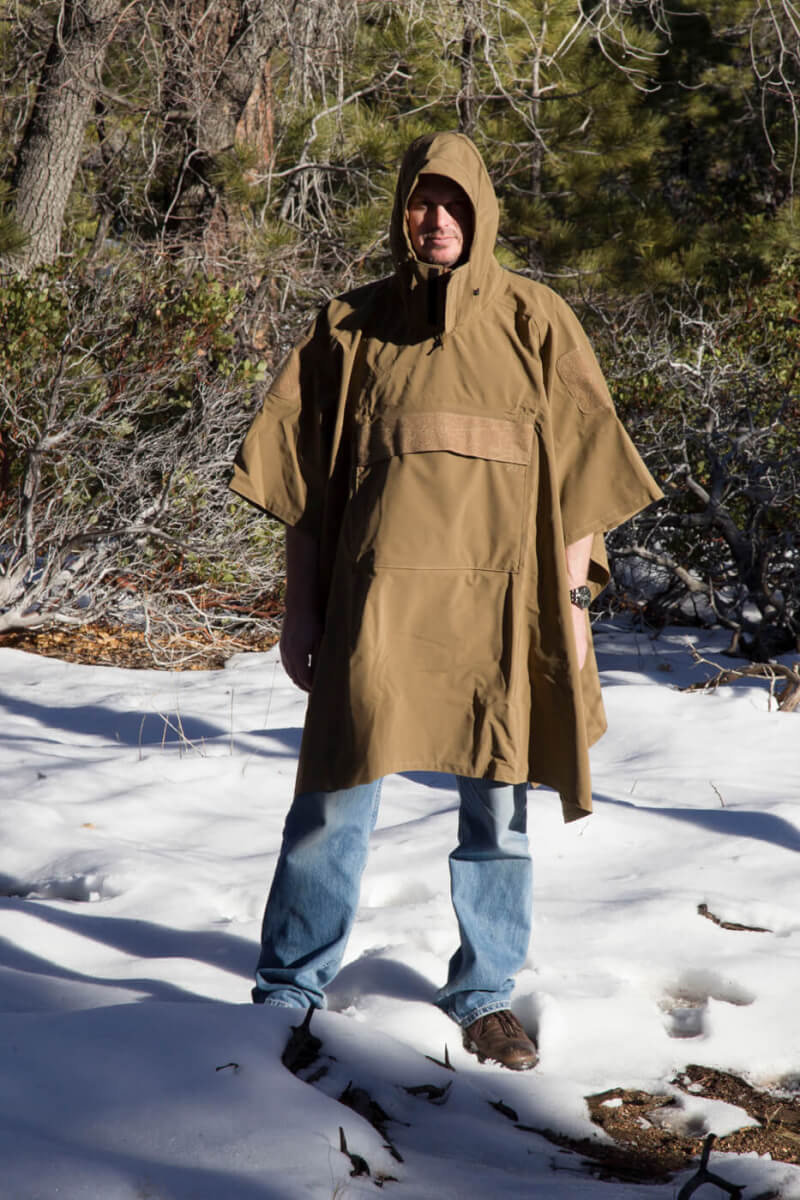Due mostly to its rounded shape and northern position on the island chain, Mount Waiʻaleʻale on Hawaii’s Kauai Island — although only 4,148 feet in elevation — averages more than 452 inches of rain each year. It is one of the wettest environments on Earth, and if you don’t have quality wet-weather gear while hiking the Kaoie Gorge or the USGS route to the rain gauge, it is guaranteed you and everything you own will be soaked by the time you reach the top.
The military issued millions of ponchos to its troops in wet-weather climates, like the south Pacific, during World War II and the jungles of Korea and Vietnam, and young men a generation or two ago learned of their abilities. They were functional gear that served a variety of purposes beyond keeping out the rain (blanket, tarp, pillow, seat). However, for whatever reason, ponchos have never been in vogue outside of the armed services. With the cheaply made vinyl ponchos on the market perhaps it is akin to wearing a plastic bag? But since when is survival about fashion? If the choice is staying alive or look good dying, it doesn’t matter what’s on the Paris runways.

Hazard4 changed that with the introduction of the Poncho Villa. Despite the pithy reference to the American ally-turned-insurgent, Pancho Villa, the Poncho Villa is as close to a best friend as you’ll get when the rain starts to pour down.
Ponchos in general have a few unique advantages over traditional raincoats and jackets, and the biggest one is that a poncho covers packs and gear you might be carrying, thereby keeping everything dry instead of just you. They are loose fitting and allow the wearer to tuck his arms inside for extra warmth or to access gear. Ponchos are usually made from a single piece of material so there are few seams to rip or leak. The Poncho Villa is about 55 inches wide and (unbuttoned and laid flat) 60 inches long.

The poncho is stored in its own front pouch which doubles as a large pocket when worn. A downside to this is that you’ll never get it back into the storage pouch/pocket exactly as you took it out, so it will take up more space in your pack than you originally thought it would after the first use. However, it is only 2.5 pounds and comes in either black or coyote tan.

The sides of the poncho button together easily to tighten up the poncho, or they can be left loose for better access to your gear (as well as making the poncho larger to cover more if you have a large pack). There are tie-downs on either side of the brimmed hood as well as on the back. Cinch these down and the hood will turn with your head, or leave them slightly loose so your head will turn inside the hood. The front flap has a zipper as well as a hook-and-loop closure that is stiff and sits high enough to keep rain from coming though the front.



The front pocket also has a zipper and a hook and loop flap. Inside, a D-ring is secured to the pocket to attach keys or other valuables. On all four corners are grommets that can be used to tie up the poncho as part of a shelter, and there are small recesses on either side of the grommets that can accept tent poles. Though this tactical poncho has grommets to be used as a makeshift shelter, it begs the question: If you are already wearing it in the rain, should you take it off to make it into a shelter, thereby getting soaked in the process?


The material is a water-resistant and breathable soft-shell fabric, while all the seams are sealed with waterproof tape. It easily slips on and off over even the bulkiest of clothing and packs, while shedding rain quickly. The disadvantage of the Poncho Villa, and ponchos in general, over traditional rain jackets, is that the loose material could possibly get caught on branches and flap in the wind.


But if keeping dry is your main objective — and it should be in the top five in any survival situation — the Poncho Villa is revolutionary… just like Pancho Villa.
MSRP: $129.99
Editor’s note: A version of this article first appeared in the April 2015 print issue of American Survival Guide.


